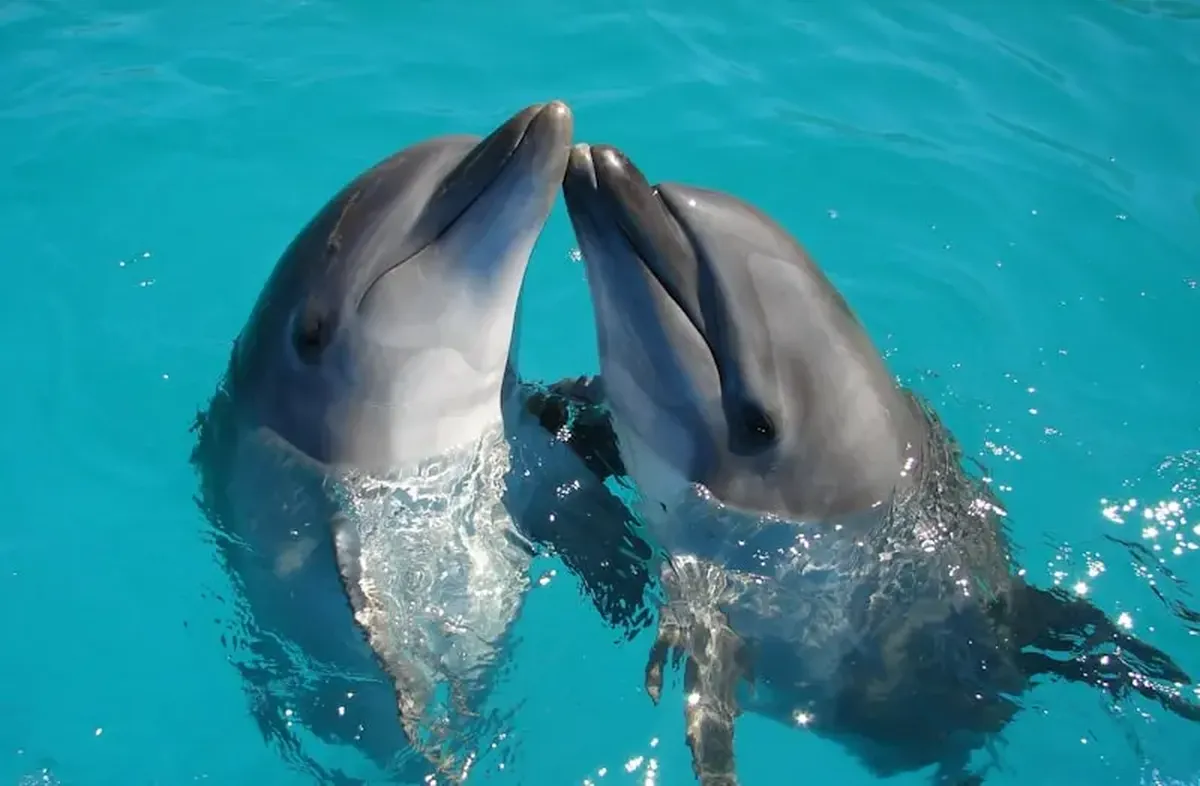Dolphins are considered one of the most intelligent creatures on Earth, second only to humans. Recent studies have shown that these animals share similarities with humans not only in their high intelligence but also in their behavior towards their young. It has recently come to light that female dolphins communicate with their calves differently than they do with adults. Just as humans use a high-pitched, baby talk when speaking to small children, bottlenose dolphins alter their usual whistles to a “baby talk” when interacting with their offspring.
The Maternal “Language” of Dolphins
Marine biologist Laela Say and her team analyzed the distinctive whistles of 19 female bottlenose dolphins, both with and without their calves. Audio recordings of a wild population near Florida were made during health assessments conducted under a catch-and-release program from 1984 to 2018. The researchers found that dolphins consistently produced whistles with higher maximum frequencies and a broader range in the presence of their calves compared to sounds made when alone or with other adults. According to the scientists, this change in vocalization helps mothers capture the attention of their young. They believe that this “baby talk” enhances the bond between mother and child and aids in the vocal learning of the calves, much like it does in humans.
In general, maternal speech is a nearly universal model of communication across all cultures among humans caring for children. However, evidence of this phenomenon among animals is quite scarce. As noted by the Daily Mail, scientists have previously observed different types of vocalizations when communicating with adult individuals and young ones in some species of monkeys and zebra finches. Bottlenose dolphins present a more intriguing subject for study, as each of these marine animals develops a unique melody or signature whistle during the first few months of life.
As Laela Say points out, dolphins call out their own “names” in the water, likely to keep track of one another. However, mother dolphins modify this melody in the presence of their calves, who typically stay close to them for 3 to 6 years. Ms. Say first noticed this feature back in 2009 during a student’s research, which sparked further observation. Recent studies conducted by Ms. Say’s team emphasize the presence of the aforementioned communication model in bottlenose dolphins, drawing parallels to human interactions. These animals maintain long-lasting bonds between mothers and calves and learn vocalizations throughout their lives. Researchers noted that the average age of the calves in their study was 2 years, which aligns with the age range for child-directed communication in humans.
The “baby talk” of dolphin mothers helps their calves learn to produce their own whistles more quickly. Scientists believe that by mimicking the sounds of a smaller vocal tract, adults guide the infants on how their own sounds should be made.
Vocal Data is Vital for Bottlenose Dolphins
It is known that whistles in dolphins are part of their courtship rituals. Through vocalizations, they choose their life partners and compete for the affection of potential mates. Experts note that bottlenose dolphins can become more popular among their peers simply through vocal exchanges. This vocalization allows these marine animals to maintain weaker yet vital social relationships. It is also known that more popular males have greater success with females and higher chances of offspring. Therefore, teaching vocalization to bottlenose calves is crucial.
According to marine mammal behavior ecologist Quincy Gibson, bottlenose dolphins are prime candidates for child-directed communication. Like humans, these dolphins form strong bonds between mother and child and learn vocalizations. However, as Mr. Gibson points out, to confirm the findings of Say’s team, scientists need to analyze the signature whistles of mother dolphins directly in the wild.


